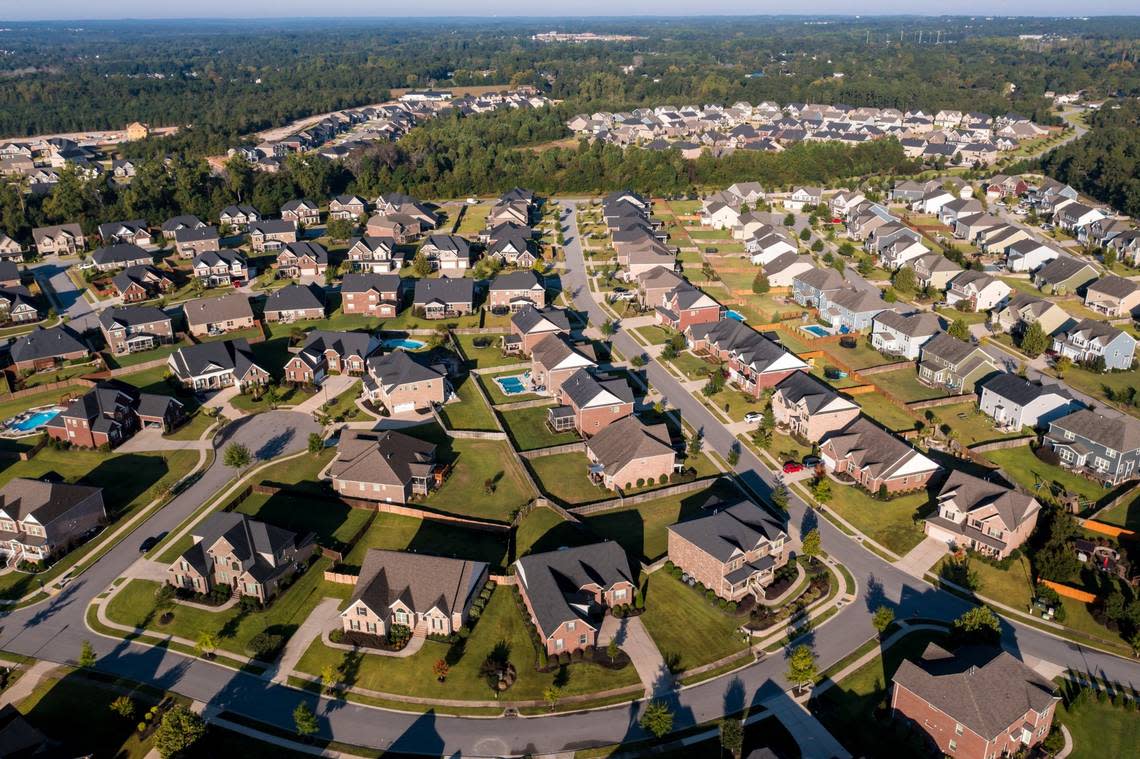After moratorium, new Lexington County subdivision plans are coming, with some changes

After a lengthy and controversial freeze on new construction, Lexington County’s subdivision moratorium is coming to an end, now with new rules and restrictions in place.
Lexington County Council gave final approval Tuesday to revisions to its planning rules and officially set an expiration date for the subdivision freeze, months after it was put into effect over protests from the building industry.
The county will begin approving new subdivisions after Friday, Dec. 10, the last day of the freeze. The temporary moratorium was set to automatically expire on Dec. 19, but council members decided to move up the end date after approving a trio of ordinances changing the county’s zoning rules.
No changes were made to the proposals after a public hearing in September expressed broad support for the measures. Residents cited concerns about increasing traffic, crowded schools and the demolition of wooded areas to make way for rows of new houses.
Lexington is one of South Carolina’s fastest-growing counties, and that’s led to an explosion of new housing across a landscape once dominated by farms and small towns. In April, the county council voted to immediately stop accepting applications for new developments of more than 10 lots until the county could revise its subdivision rule.
The new restrictions will create requirements for subdivisions, including limiting the number of houses in a development, requiring a traffic study from developers and better road access.
Changes include a new overlay district surrounding Lake Murray, which will put even stricter rules in place for construction in an area amounting to 15% of Lexington County’s land area, or 105 square miles. Council declined to take up a planning commission proposal to reduce the size of the district, so the new rules will apply throughout the northern portion of the county around Chapin and to the south and east of the lake shore out to S.C. 6, U.S. 1 and State Road 32-54.
Similar restrictions would apply to an agricultural overlay covering the southern part of Lexington County — including the towns of Gaston, Pelion and Swansea. Rules there would also require buffer areas around working farms and protections for certain species of trees.
County council members gave final approval unanimously to all three new ordinances on Tuesday. Councilwoman Debbie Summers voted against the motion setting an end date for the moratorium, arguing county staff could begin processing new applications even sooner now that the new rules are in place.
The moratorium drew opposition from builders and realtors when it was first proposed. Members of the housing industry told county council that rules mandating bigger lot sizes would just push new construction further out into rural areas, contributing to sprawl. They also argued limiting the county’s housing stock could raise prices out of the reach of new and first-time home buyers.
A lawsuit brought by the Building Industry Association of Central South Carolina succeeded in getting a judge to briefly strike down the moratorium in May, ruling the council had failed to properly announce a vote ahead of a closed-door legal briefing in April. But the council quickly acted to put the moratorium back in place.
The moratorium did not stop all work in the county. Councilwoman Charli Wessinger, who represents the fast-growing Chapin area, pointed out Tuesday that the equivalent of 7,000 individual lots had been submitted for county approval outside the period of the freeze, and those projects continued to work their way through the system throughout the moratorium.

